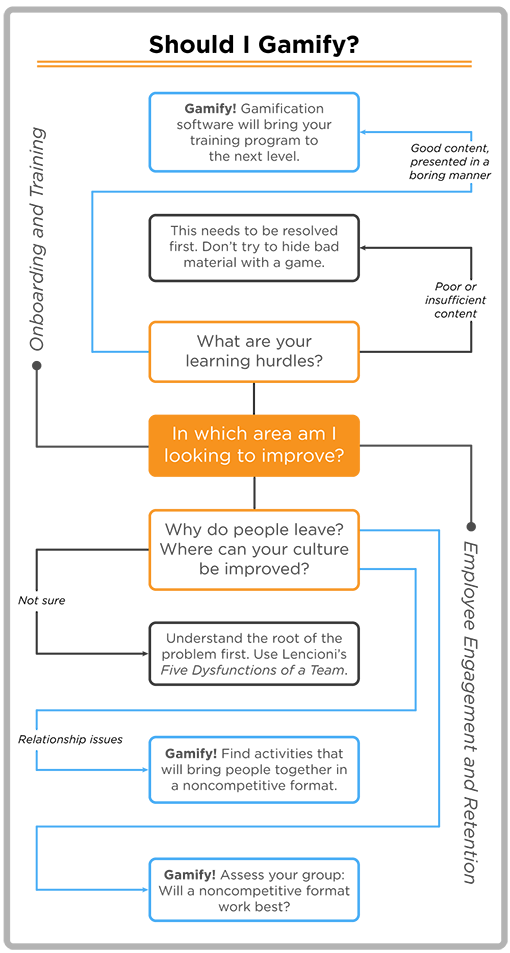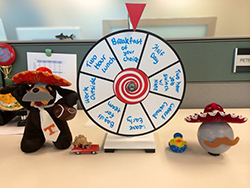Date Published June 15, 2016 - Last Updated October 5, 2016
So…you are finally ready to take the red pill and enter the world of gamification. Well, it’s about time! Before you Google it and inevitably become sucked in by one of the many vendors out there, let’s take a step back. This concept is much larger than a piece of software. First, let’s orient you to the philosophy behind gamification and talk about some of the different ways you can own the magic for yourself and your support center.
Let’s be honest; life in the support center can be a real downer. Oftentimes support analysts are under-paid and under-valued and take punches from every direction on a daily basis. Not too many kids want to be a tech support analyst when they grow up. The good news is that you can change the narrative. It is up to you to create an environment worth waking up for. A common mistake is that people try to throw money at the problem and buy a piece of software as their whole gamification strategy. Money can never take the place of careful thought and preparation. While there is some great software out there, we need to lay the foundation before dropping any Benjamins.
Gamification is all about motivating people to accomplish high-value actions. It is one of many techniques that can be effectively employed in your overall employee engagement strategy. What it really comes down to is giving your workforce a story to tell. When they are a part of something exciting and unique, they will be far better equipped to survive the typically high-burnout, high-turnover role they are in. The way that gamification is applied will look different for every organization; however, there are some key principles that will guide you to success. Ready to get started?
Step 1: Determine Your Objective
You can solve two huge problems using gamification strategies. One is training and onboarding, and the other is around general culture. Depending on what type of behaviors you are looking to reinforce, the implementation will look very different. Experiential programs work best for culture, while software/rewards systems can work great for training programs. I’ve created a simple flow chart to help you visualize the two paths and how they differ.

Step 2: Consider Your Unique Audience
Now that you have a pretty good idea of the type of problem you are trying to solve, let’s get creative on how to bring this to your team. One common pitfall is to gamify with different competitions and reward systems that ultimately pull people farther apart.  More often than not, you will be much better served to find games and activities that are going to bring people together. Have them collaborate to achieve team rewards. Create opportunities for them to hold one another accountable to the objectives, versus everything being a top-down effort. If the employees don’t own the gamification experience for themselves, you will get tired of trying to drive it alone. Be sure to include your employees in the creation process and to verify the things that actually motivate them as individuals. One example that was a hit for our support center was getting in character and playing out a murder mystery dinner. Refer to the bottom of my blog post, Gamification in the Service Center, for a few exciting ideas you can try! If nothing else, they will get your creative juices flowing.
More often than not, you will be much better served to find games and activities that are going to bring people together. Have them collaborate to achieve team rewards. Create opportunities for them to hold one another accountable to the objectives, versus everything being a top-down effort. If the employees don’t own the gamification experience for themselves, you will get tired of trying to drive it alone. Be sure to include your employees in the creation process and to verify the things that actually motivate them as individuals. One example that was a hit for our support center was getting in character and playing out a murder mystery dinner. Refer to the bottom of my blog post, Gamification in the Service Center, for a few exciting ideas you can try! If nothing else, they will get your creative juices flowing.
Step 3: Take Action
You now know the objective you are trying to achieve and how to bring it to your audience. It’s time to book those tickets, purchase that software, rent that dunking booth, or whatever you’ve concocted. The biggest thing in this stage is to keep it fresh. A program like this requires constant creative energy, or it will become status quo and no longer be effective as a motivation tool. As an example, a regular raffle is great, but it becomes stale quickly. Find new, exciting ways to award and keep your employees guessing. Don’t bear the burden alone. Work with other stakeholders across your business to breathe new energy into the program at least once a quarter.
There you have it—three guidelines for a successful gamification initiative. With a concept this big, there are thousands of great ideas out there to give this program serious punch. Leave one of your favorite suggestions in the comments so we can learn from each other!
Nate Brown has had an outstanding day when he is able to help customers. As the manager of customer support for UL, Nate’s ambition is to create outstanding service interactions through creativity, knowledge, and professionalism. He is an HDI Certified Support Center Manager, vice president of communications for the HDI Music City Chapter, and speaker in the Southeast region. Nate is also the founder and primary author for the service blog CustomerCentricSupport.com. Follow Nate on Twitter @CustomerIsFirst and connect with him on LinkedIn.